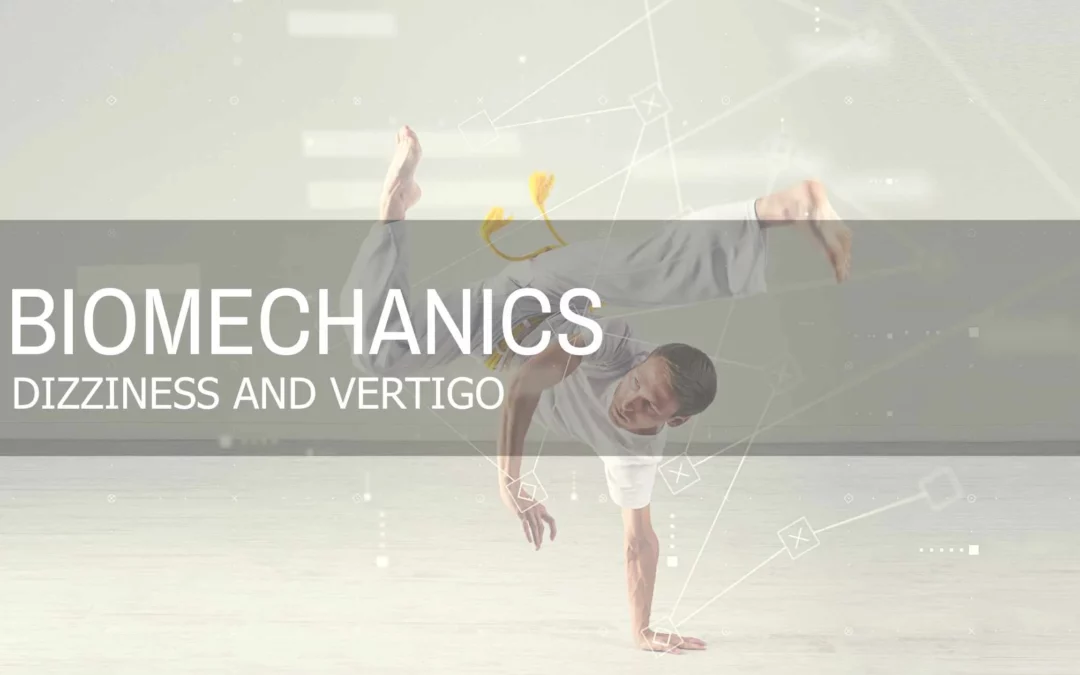What is Dizziness and Vertigo?
Dizziness is defined as an unpleasant disturbance of spatial orientation. Vertigo is a type of dizziness related to the perception of movement of either one’s own body, or the environment around them. There are many types of vertigo including central vertigo, involving the vestibular structures in the brainstem and cranial nerves, peripheral vertigo involving the structures of the inner ear, and cervical vertigo involving the structures of the neck. One specific and common form of peripheral vertigo is known as Benign Paroxysmal Peripheral Vertigo (BPPV), which involves small crystals in the cochlea that can dislodge and affect the function of the inner ear.
Structures of the Inner ear – The Vestibular system
The vestibular system consists of a number of structures in both the peripheral and central nervous system. Two small bones in the ear filled with fluid and sensory hair cells communicate with the eighth cranial nerve and the brain, allowing one to sense their body and surroundings relative to motion, head position, and spatial orientation.
The Vestibulo-ocular reflex (VOR)
The vestibulo-ocular reflex is a mechanism of the vestibular system which integrates sensory (vision and movement) input with a motor, or muscular, output. Simply put, the vestibulo-ocular reflex is the process by which one is able to maintain balance and stability while the eyes and head are constantly moving. When the head moves in one direction at a given speed, the vestibulo-ocular reflex engages to create a motor response of the eyes in the equal and opposite direction, readjusting the visual world continuously.
Causes, signs, and symptoms?
Vertigo can have a variety of causes including stroke, traumatic brain injury, infection, migraine, head and neck injury, along with others. BPPV is caused by the dislodging of tiny crystals in the inner ear. Other factors including muscle tightness in the sub occipital and cervical muscles can also contribute to dizziness and vertigo.
The signs and symptoms of vertigo can vary depending on the type, but in general, this condition is characterized by the altered perception of movement of the surrounding environment in the absence of actual sensory input, often times caused by head movements or changes in position such as moving from laying down to sitting up. This sensation can lead to nausea, vomiting, and fainting, and tends to come in the form of episodic “attacks” rather than as a constant sense of dizziness. These attacks can last anywhere from seconds to days depending on the cause of the symptoms.
A closer physical exam will show abnormal eye movements called nystagmus (rapid involuntary eye movements) or corrective saccades (jerking eye movements between fixation points). The direction of nystagmus can give move information about the type of vertigo and should be observed and diagnosed by a healthcare professional.
How to maintain a healthy vestibular system?
Like any muscle or system in the human body, the vestibular system can be trained and improved. One of the best ways to maintain the health of the vestibular system is through balance training, specifically with the use of head and body movements. Training the vestibulo-ocular reflex in a variety of directions while maintaining a balance position, such as a single leg stance, can help to strengthen the sensory connection of the eyes to the brain in unstable circumstances.
Suggested Interventions
Assess for vertigo with Vestibulo-ocular reflex:
*Sitting in a chair, hold one arm straight out in front with thumb up and gaze focused on the thumb nail.
*Turn the head side to side keeping the eyes focused on the thumb nail
*Note any symptoms including spinning of the environment, inability to focus gaze, nausea, or dizziness
* Perform again moving the head up and down
Increase mobility of the cervical musculature
*Mobilize suboccipitals –
*Mobilize scalene –
Increase the strength of the deficit muscle groups –
*Supine cervical retraction with cervical flexion and extension: 2 x 20
*Single leg stance head turns with gaze focus: 2 x 20 reps, 3 times per day
References
- Somisetty S, M Das J. Neuroanatomy, Vestibulo-ocular Reflex. [Updated 2020 May 30]. In: StatPearls [Internet]. Treasure Island (FL): StatPearls Publishing; 2020 Jan-. Available from: https://www.ncbi.nlm.nih.gov/books/NBK545297/
- Lui F, Foris LA, Willner K, et al. Central Vertigo. [Updated 2020 Jul 6]. In: StatPearls [Internet]. Treasure Island (FL): StatPearls Publishing; 2020 Jan-. Available from: https://www.ncbi.nlm.nih.gov/books/NBK441861/
- Clendaniel RA. The effects of habituation and gaze stability exercises in the treatment of unilateral vestibular hypofunction: a preliminary results. J Neurol Phys Ther. 2010;34(2):111-116. doi:10.1097/NPT.0b013e3181deca01




